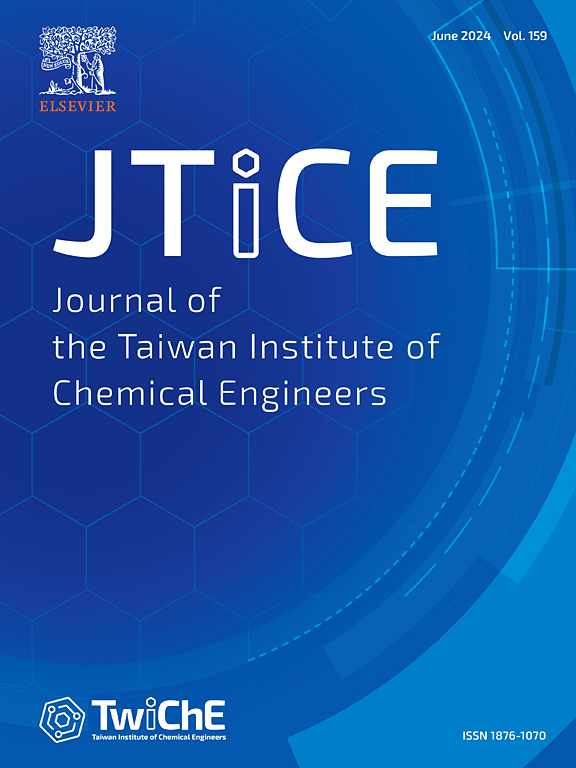深入了解微塑料污染及其在废水和其他环境中降解的最新进展
IF 5.5
3区 工程技术
Q1 ENGINEERING, CHEMICAL
Journal of the Taiwan Institute of Chemical Engineers
Pub Date : 2025-01-01
DOI:10.1016/j.jtice.2024.105504
引用次数: 0
摘要
本文章由计算机程序翻译,如有差异,请以英文原文为准。

Insights of recent developments in microplastics pollution and its degradation in wastewater and other environment
Background
Microplastics (MPs) are pervasive environmental pollutants that have garnered increased attention due to their adverse impacts to the ecosystem. This review encompasses a comprehensive exploration of various facets of microplastics starting with the global impact of MPs, the routes of administration in the environment, and the exploration of practical ways to degrade MPs.
Methodology
The methodology section outlines the systematic approaches are being employed in scrutinizing MPs using the physical, chemical and biological methods of the degradation. Plastics can be broken down into smaller fragments by photodegradation since it only reduces MPs into smaller particles which may remain in the environment for several years and thus it cannot provide a complete solution for the removal of microplastics pollution. Though chemical methods look promising in remediating the MPs pollution but the chemicals used in the degradation may be hazardous and may cause the further contamination. Microorganisms are the potential alternatives that could efficiently metabolize and degrade MPs for their energy requirement in an eco-friendly way. Microbial enzymes augmenting the MPs degradation have also been discussed elaborately.
Findings
Research in MPs degradation is still in budding stage and the recent research has shed light for a promising solution. Physical and chemical methods have been used for the MPs removal and degradation while they have their own limitation also. Hence, researchers have identified several microorganisms as suitable candidates for the biodegradation of MPs and scientists are striving diligently to enhance their degradation potentials. Currently, employing the microbial consortia for MPs degradation is considered to be effective. MHETase and PETase from microbial sources are known to breakdown PET, which opens a new avenue for enzyme based microplastics degradation.
求助全文
通过发布文献求助,成功后即可免费获取论文全文。
去求助
来源期刊
CiteScore
9.10
自引率
14.00%
发文量
362
审稿时长
35 days
期刊介绍:
Journal of the Taiwan Institute of Chemical Engineers (formerly known as Journal of the Chinese Institute of Chemical Engineers) publishes original works, from fundamental principles to practical applications, in the broad field of chemical engineering with special focus on three aspects: Chemical and Biomolecular Science and Technology, Energy and Environmental Science and Technology, and Materials Science and Technology. Authors should choose for their manuscript an appropriate aspect section and a few related classifications when submitting to the journal online.

 求助内容:
求助内容: 应助结果提醒方式:
应助结果提醒方式:


